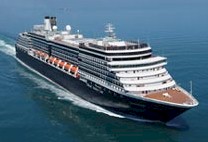 Comparing human settlement patterns on the luxury liner Westerdam with towns and cities in Virginia, as I’ve done in my most recent column, “Earthship Westerdam,” may seem a bit of a stretch. I certainly don’t advocate modeling Virginia communities on a cruise liner with midtown-Manhattan levels of density. I regard the article as more of a brain bender. Sometimes it helps to take a look at familiar problems from radically different perspectives.
Comparing human settlement patterns on the luxury liner Westerdam with towns and cities in Virginia, as I’ve done in my most recent column, “Earthship Westerdam,” may seem a bit of a stretch. I certainly don’t advocate modeling Virginia communities on a cruise liner with midtown-Manhattan levels of density. I regard the article as more of a brain bender. Sometimes it helps to take a look at familiar problems from radically different perspectives.
A number of observations come out of the story.
- The autocentric society. It’s amazing what happens when you take cars and supporting infrastructure (roads, parking spaces, driveway and garages) out of the equation. The need for space is drastically reduced. Layer 15 decks (11 above the waterline, four below) on top of one another, link them vertically with stairwells and elevators, and nearly all destinations required for a population of 2,700 are within a five-minute walk of one another.
- Private space/personal space. It’s remarkable how much you can shrink private space (personal residences) if you compensate with quality public spaces. In America, we buy ever bigger houses that incorporate an increasing array of once-public functions; all the while, the public realm suffers. Spaceship Westerdam does the opposite, cramming passengers into tiny staterooms but providing an extraordinary array of amenities from pools to casinos, concert halls to gourmet restaurants. And bars. Lots of bars.
- Conservation and environmental protection. It’s incredible what a community (and a cruise liner is a community) can do with just one environmental officer among its 800-person crew and staff. The Westerdam has recycling and water treatment capabilities you won’t find in towns or cities 10 times its population. The lesson for Virginia: Set environmental goals, measure your progress in achieving them, and then ratchet your goals higher as you succeed. By cutting energy consumption and waste disposal costs, conservation often pays its way.
Please note: I do not believe in social engineering. I do not want to turn our towns and cities into replicas of cruise liners. I just think that there may be perspectives worth borrowing as we visualize the kinds of communities we want to build and live in.
(Photo credit: Holland-America Line)

Leave a Reply
You must be logged in to post a comment.